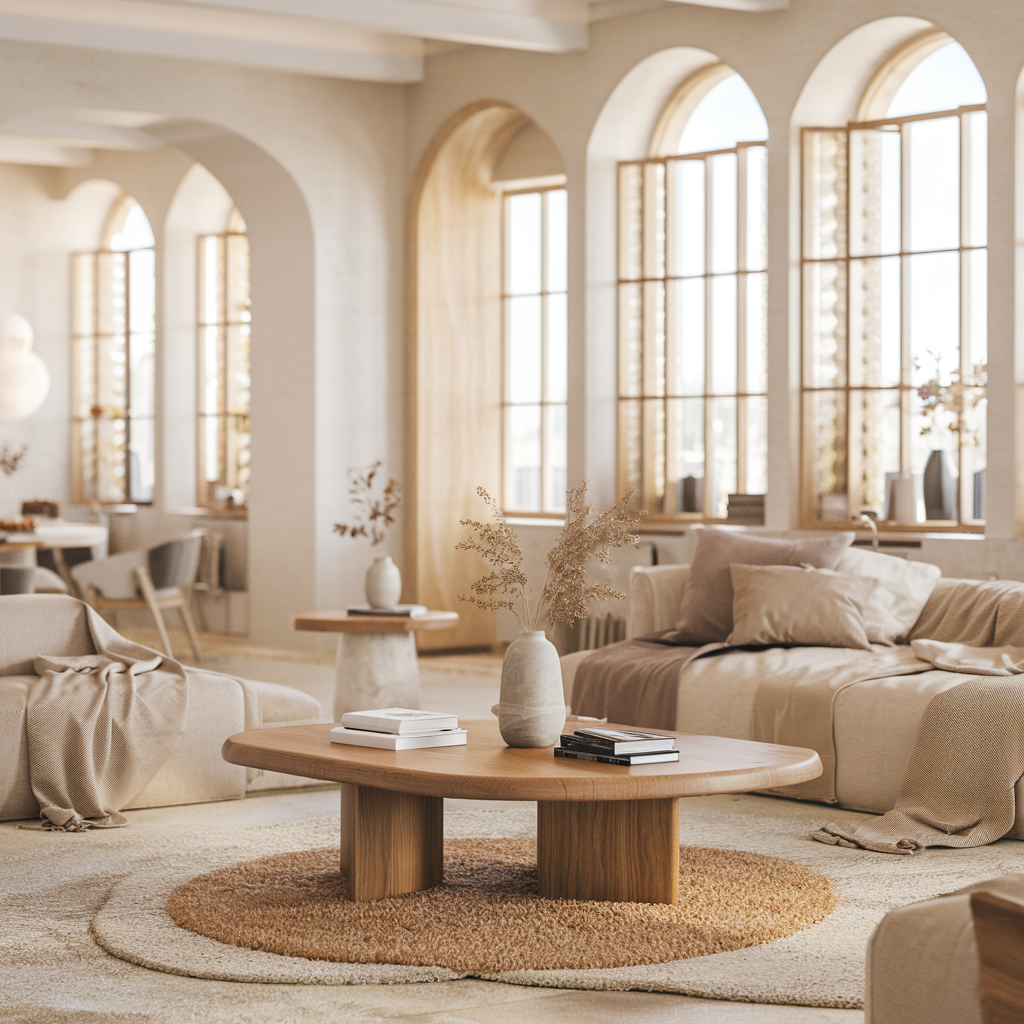Coffee Table Design Tips
How To Match Coffee Tables With Sofas And Rugs
Matching a coffee table with sofas and rugs ensures harmony in the living room. From proportions to materials and colors, the right balance creates a cohesive, inviting design. This guide explains how to coordinate these elements effectively. For further inspiration, visit Coffee Table Design Tips.
Start with the right size
The size of your coffee table should be proportional to your sofa. A general rule is to choose a table about two-thirds the length of the sofa. This keeps proportions balanced and ensures easy access from all seats.
The table height should match or sit slightly below the sofa cushion height for comfort. Explore various options in our coffee tables collection.
Shape matters
The shape of the coffee table influences how it interacts with the sofa and rug. Rectangular tables suit long sofas and sectionals, while round tables work best in smaller rooms or with L-shaped seating.
Square tables can anchor large, open layouts. For comparisons of round and rectangular styles, see Round vs Rectangular Coffee Tables: Pros and Cons.
Coordinating with sofa styles
Sofas set the tone of the room, and your coffee table should complement their design. A sleek modern sofa pairs well with a minimalist wooden table, while a plush, traditional sofa calls for a rustic or ornate table. Matching wood tones with sofa legs enhances visual unity. For rustic furniture pairings, browse Console Table Inspiration.
Matching rugs and coffee tables
Rugs define the zone where the coffee table and sofa interact. Choose a rug large enough so the table sits fully on it, with at least the front legs of the sofa resting on the rug. Neutral rugs balance bold wooden tables, while patterned rugs pair well with simple, solid designs. For rustic surface ideas that complement rugs, check Rustic Wooden Coffee Tables That Elevate Any Living Room.
Color and texture coordination
Harmonize colors by matching table finishes with tones from the sofa fabric or rug pattern. For example, a walnut coffee table complements beige or gray upholstery, while lighter pine works with pastel rugs. Mixing textures smooth leather sofas, woven rugs, and natural wood adds depth.
Functionality and storage
If your living room doubles as a family space, consider coffee tables with storage drawers or shelves. This keeps remotes, magazines, and small items neatly out of sight. The storage function enhances practicality
while maintaining a clean surface for décor. For larger-scale storage ideas, explore the cabinets and chests collection.
Accessorizing the coffee table
Décor accents tie the sofa, rug, and table together. Use trays to group items, add a vase with seasonal flowers, or stack books for height variation. Choose accessories that pick up colors or textures from the sofa and rug to unify the look. For additional styling ideas, see How to Style a Wooden TV Stand with Décor Accents.
Long-term value of wooden coffee tables
Wooden coffee tables offer durability and timeless appeal. Unlike glass or plastic, solid wood can be refinished, ensuring it adapts to evolving décor trends. Their ability to blend with different sofa and rug styles makes them versatile investments. Learn more about durability in Why Solid Wood TV Stands Are the Best Choice for Long-Term Use.
Conclusion: balance is key
Matching coffee tables with sofas and rugs requires attention to size, shape, color, and texture. The right combination ensures the living room feels cohesive and functional. Whether rustic, modern, or mid-century, wooden coffee tables anchor the design and elevate the space. For more living room furniture guides, explore the TV Stands and Entertainment Units category. To discover the complete product selection, return to the homepage.

